Nothing but top class – The history of our ribbon production
By Livia Weber
Mario Ballabio, along with our ribbon production experts, is responsible for producing the one particular component that won PIEGA worldwide fame. In tech lingo, it is called a «coaxial mid-high ribbon.» How does a professional windsurfing career and the renowned opera Arabella fit into the picture? Read on and learn more about Mario’s unique ties to PIEGA.
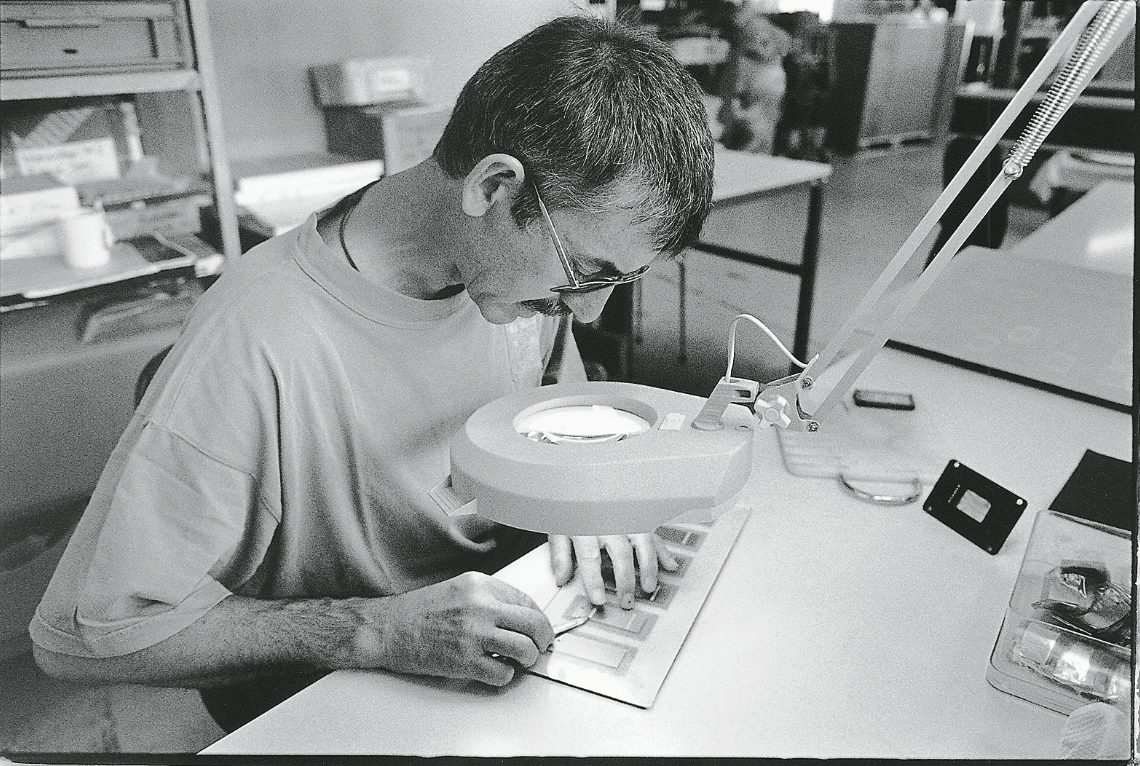
In 1986, PIEGA SA was founded by the loudspeaker pioneer and innovator Kurt Scheuch and the talented salesman Leo Greiner. The same year, they hired their first employee Aldo Ballabio, Mario’s father. Along with Kurt, he became the ribbon specialist. In these early years, their headquarters were still in a garage, but this was soon to change. Their first loudspeakers had illustrious names like “Elektra” and “Arabella.” Though not in honor of their current girlfriends, but instead of the spectacular operas by Richard Strauss.
Mario had just completed his ETH sports teacher’s degree at the time. Windsurfing was his life, and he successfully entered competitions on a professional level. To pursue his career, he moved to Hawaii, where he would stay for several years. He even participated in the World Cup and was named one of the 25 best surfers in the world. But after ten years, he returned to Switzerland and began working for his father at the PIEGA production facility in 1996. In the meantime, the factory had moved from its tiny garage to a larger facility in Horgen (where it has been located ever since.)

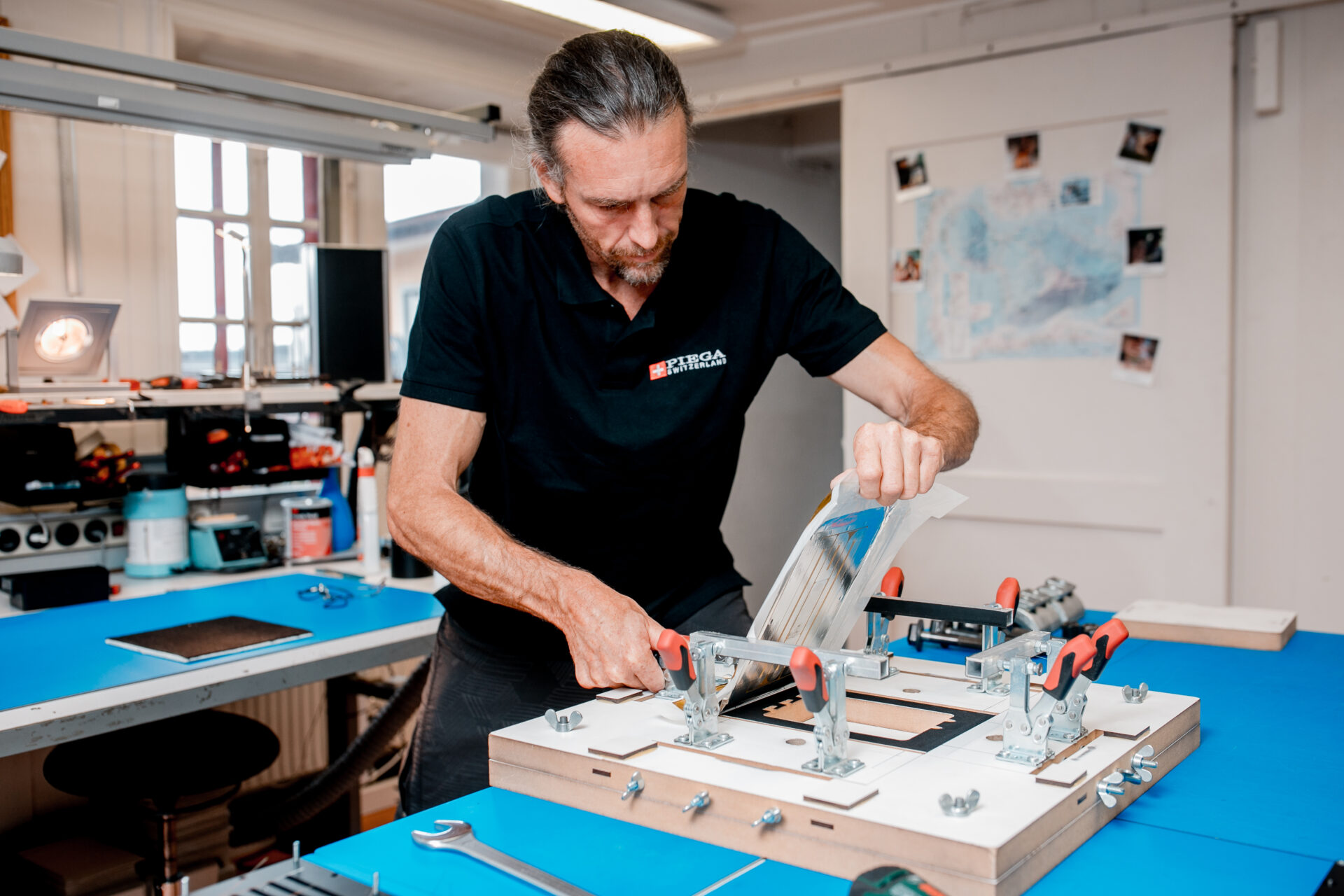
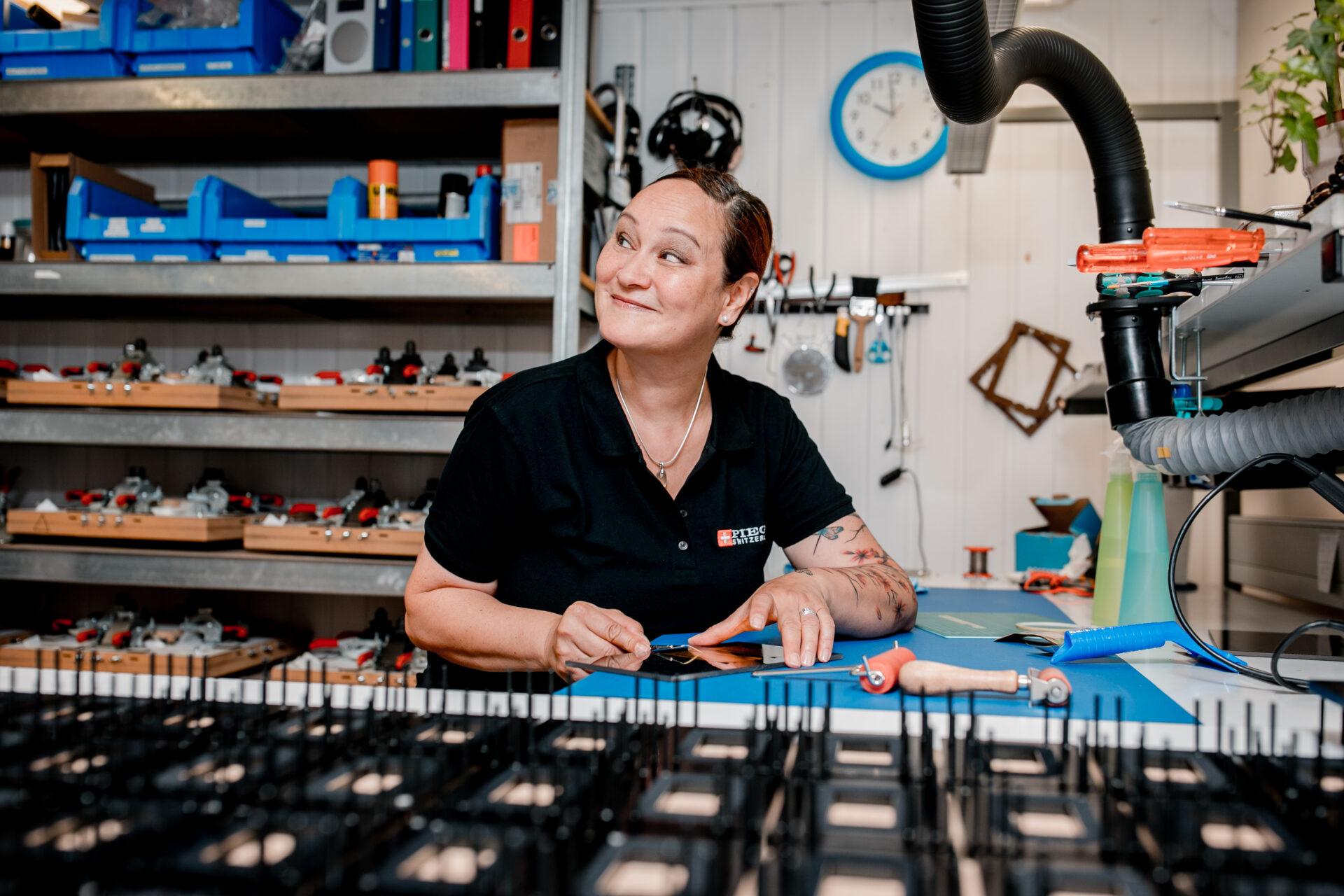
The number of employees had multiplied, and Aldo introduced Mario to the art of the unique folding process of the wafer-thin aluminum foil. «Piegare» means folding in Italian, which lead to our company name, «PIEGA.» From then on, surfing became a recreational sport for Mario. He worked with his dad until Aldo retired and continued his tradition with his colleague Jasmine Keller.
Mario’s sportsmanlike ambition was a huge benefit, albeit in a different context, because when it comes to ribbons, top-class is barely good enough. It takes around 30 work stages and pronounced sensitivity to produce a coaxial ribbon. The materials are rather expensive, and the wafer-thin foil is extremely delicate. This task requires tremendous knowledge, from precision craftsmanship to sound converter technology. Just one faulty solder joint or a micro-crack in the diaphragm, and you’ll have to start all over again.
The job of a ribbon specialist is pretty rare. In fact, there likely are only two of them in the entire world. Mario and Jasmine are fully aware of the great deal of responsibility this entails, which is why they have introduced Ailina, Rachid and Thaíssa to this delicate craft. Ailina, Mario’s daughter, already completed an internship from 2020 to 2021 and now continues the family tradition. Alongside her biology studies, she supports our productions whenever possible. We at PIEGA are delighted to have her on board. With her expertise, she is our hope and highly valued talent for the next generation of ribbon production.
Since the 80s, our midrange has been very popular among experts. Nonetheless, we continue to develop our products to perfection for nothing less than outstanding sound quality
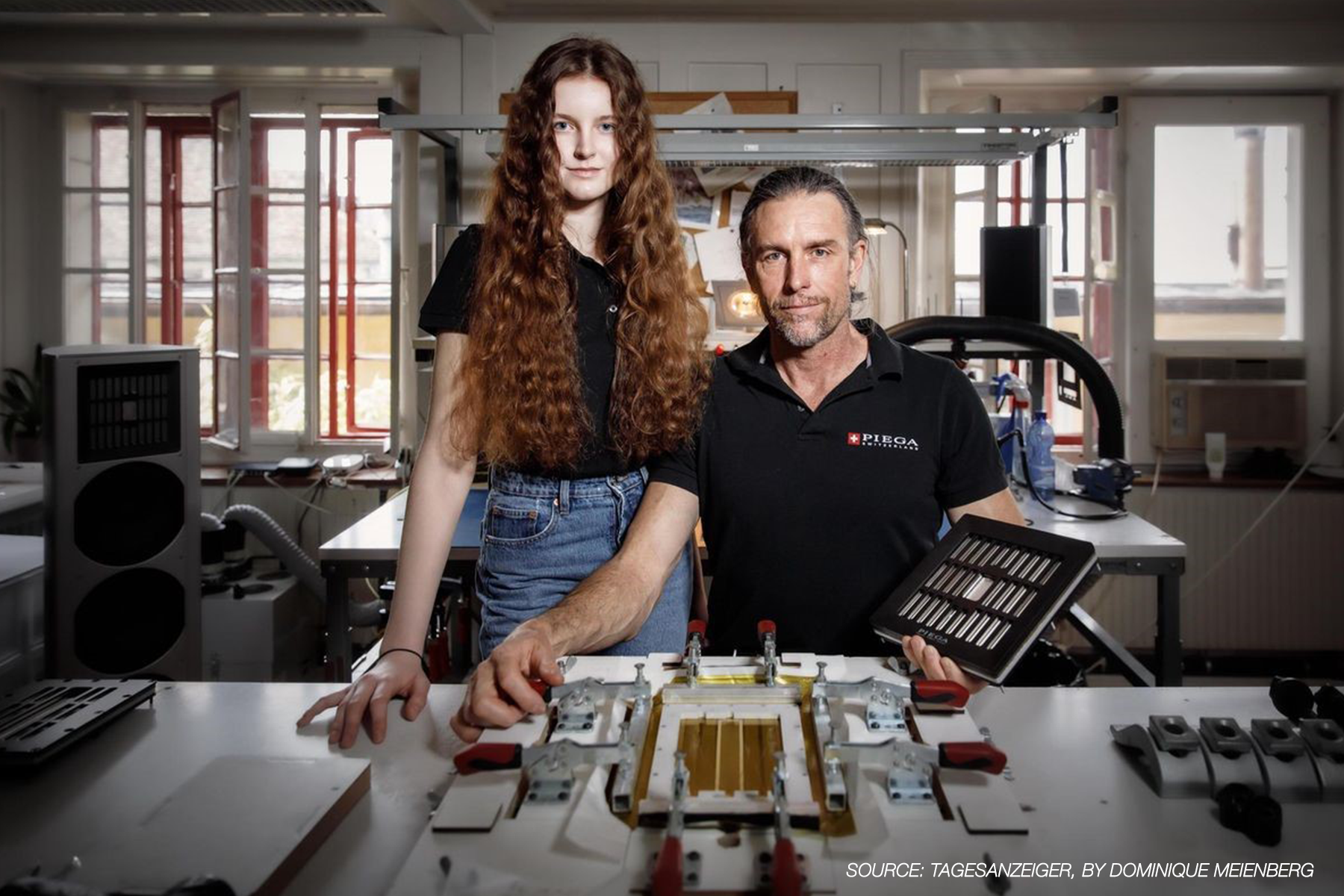
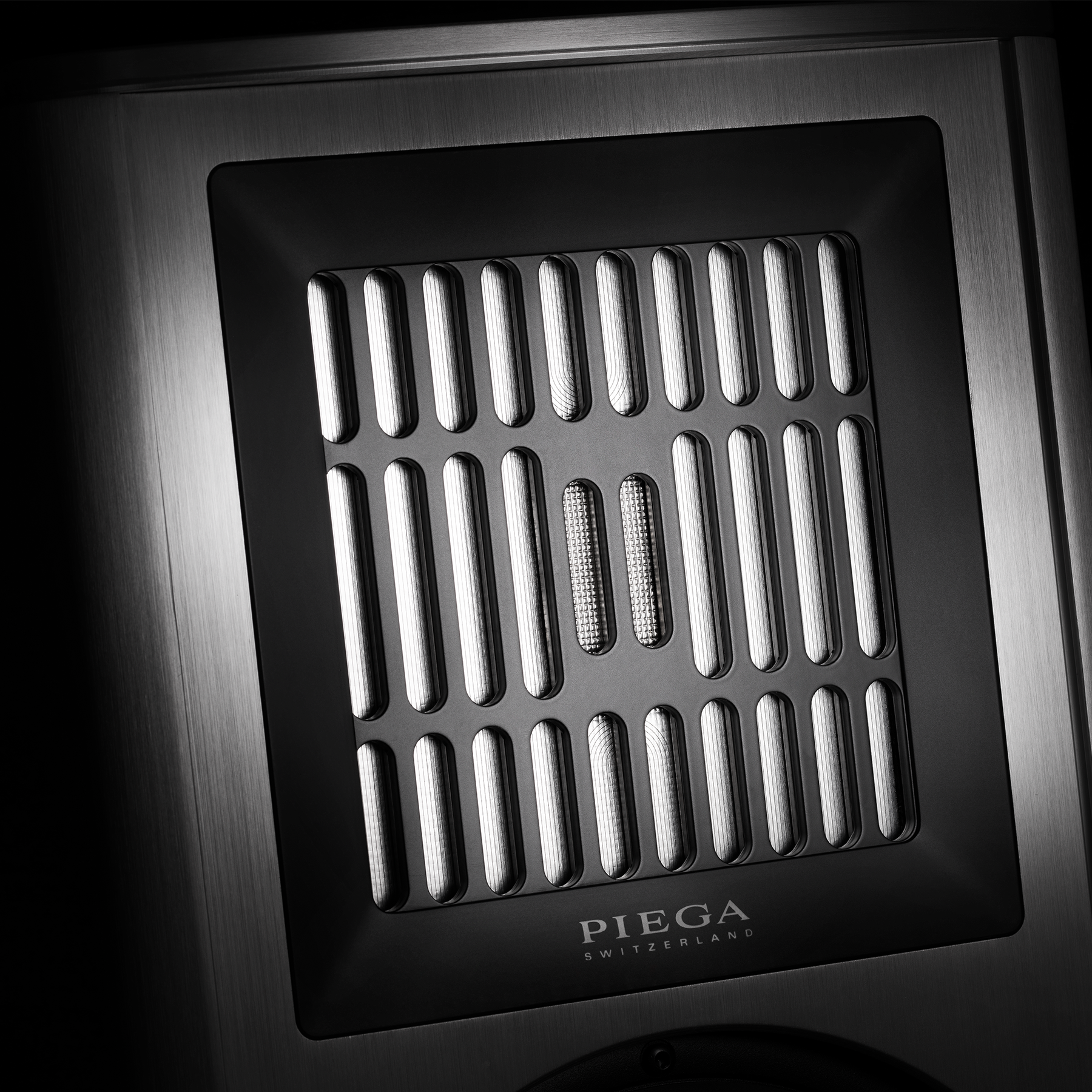
COAXIAL RIBBON TECHNOLOGY - THIS IS HOW IT WORKS
With its level of detail and degree of efficiency, the ribbon clearly surpasses the performance of a conventional midrange or tweeter. Its excellent sound characteristics result from an extremely light 20 µm diaphragm made from wafer-thin upilex foil and equally thin aluminum foil. The principle of all our ribbon technology systems is based on the diaphragm also being the voice coil and thus the speaker’s “engine.” Since the diaphragm’s surface is evenly set into oscillation, it can be kept wafer-thin and hence very light.
The moving load of the tweeter is only seven milligrams, and thus around 30 times less than that of the lightest commercially available tweeters. The diaphragm contains several flat coils, which are etched out in a very complex spray-etching process. It is moved by the strongest neodymium magnets, which are attached to the rear and front at a distance of 1 mm from the coaxial foil. They compress the magnetic field lines, allowing the tweeter to achieve a sound pressure of more than 100 dB. The coaxial driver in the picture is the world’s only correct point source that combines midrange and tweeter across all three axes (X, Y, and Z axes). With audible results: a particularly clear and incredibly detailed sound image!
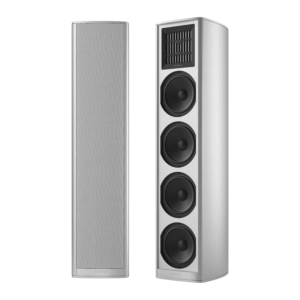
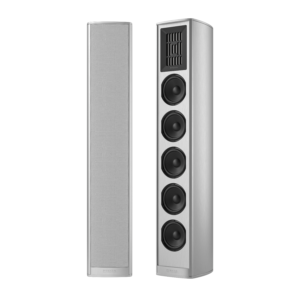
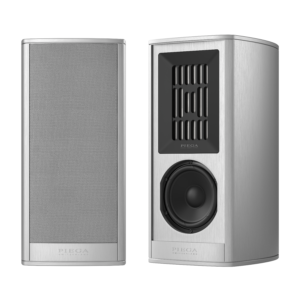
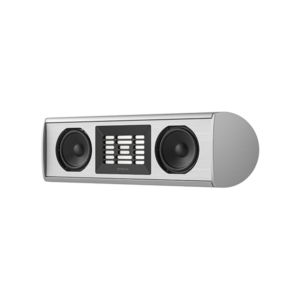
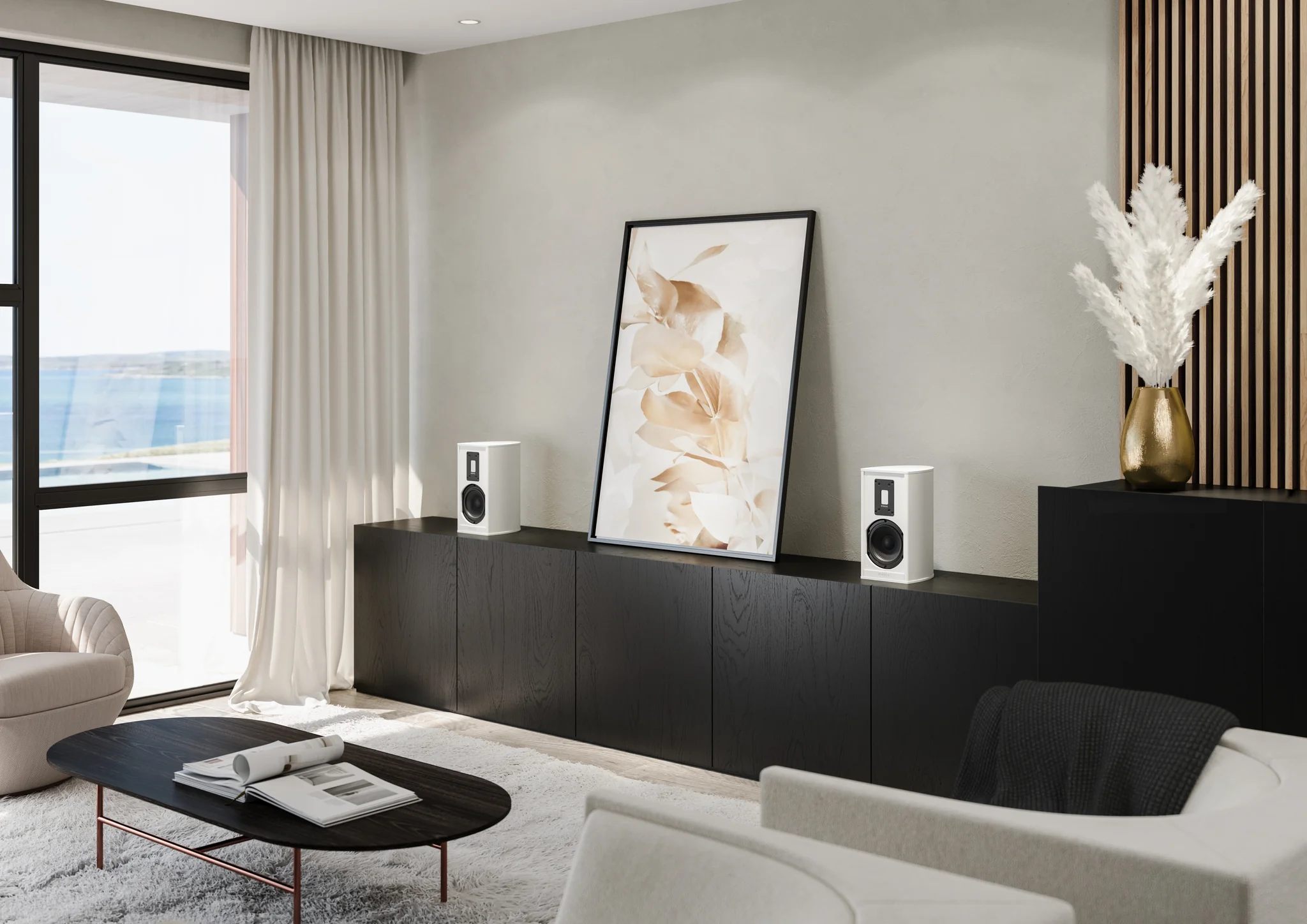 Please wait while we redirect you to PIEGA USA.
Please wait while we redirect you to PIEGA USA.